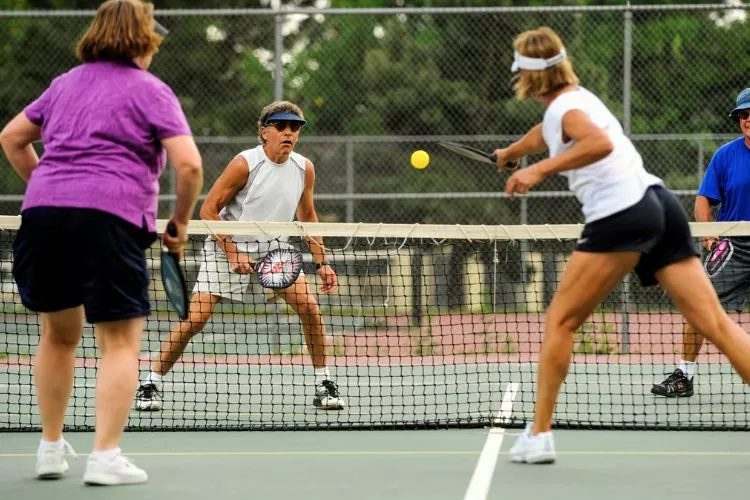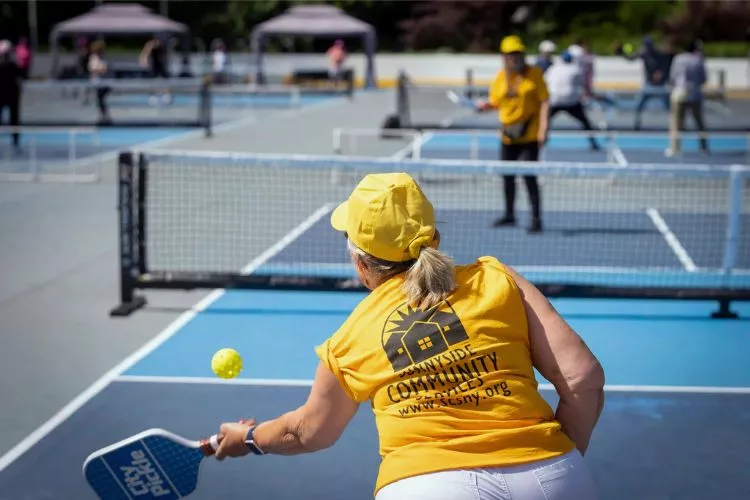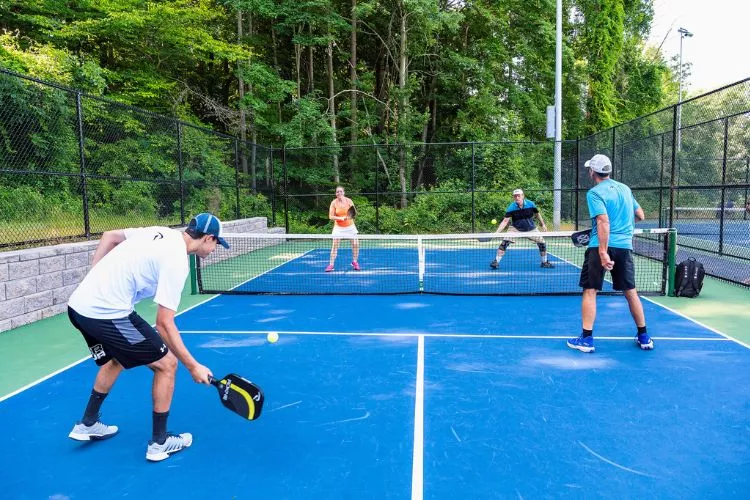Switching sides in pickleball can be perplexing. If you’re asking yourself, “When do I switch sides in pickleball?” you’re not alone.
This game has a unique rhythm and an intriguing rule set. This article zeroes in on that very topic.
We provide a clear, comprehensible explanation of when and why to swap sides in pickleball.

We guarantee, it’s not as complicated as it seems! Discover the specifics of this pickleball rule right here.
When do you switch sides in pickleball?
In pickleball, there are specific instances when players switch sides, and they vary based on the type of play, whether it’s a singles or doubles match, and the type of scoring system implemented.
During a standard game of pickleball, players switch sides of the court after every odd point in a doubles match. That’s because the serve always starts from the right, or even, side of the court.
When the serving team scores a point, the server moves to the opposite side, and the receiver stays in their original position.
In singles play, the server switches sides after scoring as well. If the server starts on the right side, they stay on their right side while serving until they make a point.
When they make a point, they switch to the left side, and so forth. This switching allows for a fair distribution of challenges, such as sun and wind conditions.
However, in tournaments or more competitive settings, players often switch sides at a total combined score, usually 6 or 8 when the game goes to 11, or 11 when the game goes to 21.
Switching sides mid-game can offer both strategic and psychological advantages. It revitalizes players and also provides an opportunity to reassess and adjust their game play.
For instance, players can switch to the sunny side to serve, forcing the opponent to look into the sun and making it harder for them to return the serve.
Moreover, switching sides helps balance the effects of outdoor elements like wind and sun. It provides both players or teams with comparable experiences and challenges, ensuring no player gains an undue advantage from these factors.
So, the timing of when you switch sides in pickleball depends on these game circumstances. It is essential to understand these rules thoroughly to leverage them to your advantage and enhance your gameplay.
The Role of Switching Sides in Tournament Play
In tournament play, side switching rules are crucial. Players switch when their combined score reaches a certain number. For a game up to 11, it’s either at 6 or 8. In a game up to 21, it’s typically 11.

Impact of Court Condition
One key reason for this rule is court conditions. Elements like sun positioning or wind direction can either elevate or impair your game. A keen awareness of such variables can turn the tide in your favor.
Fair Play
Switching sides during high stake games upholds fairness. No player should possess an unjust advantage. If one side of the court proves favorable, both players get a chance at utilizing it.
Strategic Breaks
During switches, a short break often ensues. This period offers players a chance to reset, reassess, and plan. A fresh outlook at the game or a new technique could be your ticket to a victorious comeback.
Psychological Edge
A shift of court side also envelops a psychological element. An opponent thriving on one side might struggle after the switch.
Such uncertainty can offer you a strategic edge. Understanding the ins and outs of side-switching in tournament play is crucial.
It accounts for physical and psychological dynamics and ensures equitable gaming. Equip yourself with these insights for your next big pickleball tournament.
Importance of Court Conditions
Understanding and analyzing the conditions of each court is crucial in playing pickleball. Mastering the game involves evaluating several factors on each side and adapting your play style accordingly. Some particulars that significantly contribute to court conditions are:

Surface and Material
Pickleball courts come in a variety of surfaces and materials, including concrete, asphalt, and acrylic. Each type presents unique challenges and affects ball movement differently.
Concrete courts usually offer a consistent playing surface, while asphalt may cause uneven ball bounces. Acrylic-based courts provide grip but can be slippery when wet.
Being familiar with various court surfaces allows players to fine-tune their tactics for each specific court.
Climate
Changes in weather patterns can considerably impact pickleball gameplay. If playing outdoors, weather elements like sun, wind, humidity, and temperature should be taken into account.
Staying aware of the wind direction can give you an edge, allowing you to aim your shots more accurately.
Likewise, dealing with glaring sun can be troublesome; strategize how to capitalize on it by making your opponent face the sun during challenging points.
Altitude
Playing at higher altitudes affects pickleball strategies due to thinner air. Similar to other racquet sports, the ball travels faster and bounces lower in higher elevations.
Adjusting your playing style with softer shots and well-placed lobs or taking advantage of the faster flight is vital for success at different altitudes.
Conclusion:
Understanding when to switch sides in pickleball is integral to the game, affecting both its rhythm and strategy.
Switching sides occurs under specific conditions during standard games, singles, doubles, and tournaments.
It serves not only to maintain fairness by neutralizing the impact of outdoor elements but also to introduce psychological and strategic elements into play.
Mastering the right time to swap sides can give you a considerable advantage in the game. So, grab your paddle, understand these rules, and step onto the court to enjoy a thrilling game of pickleball!

Pickleball’s more than a game to me—it’s a passion. I write, sharing its highs and lows, the thrills and the lessons. Some tales might draw you to the court, while others give a hint of the game’s magic. So, curious about my journey? Ready to dive deep into the world of pickleball with me? Let’s go.
